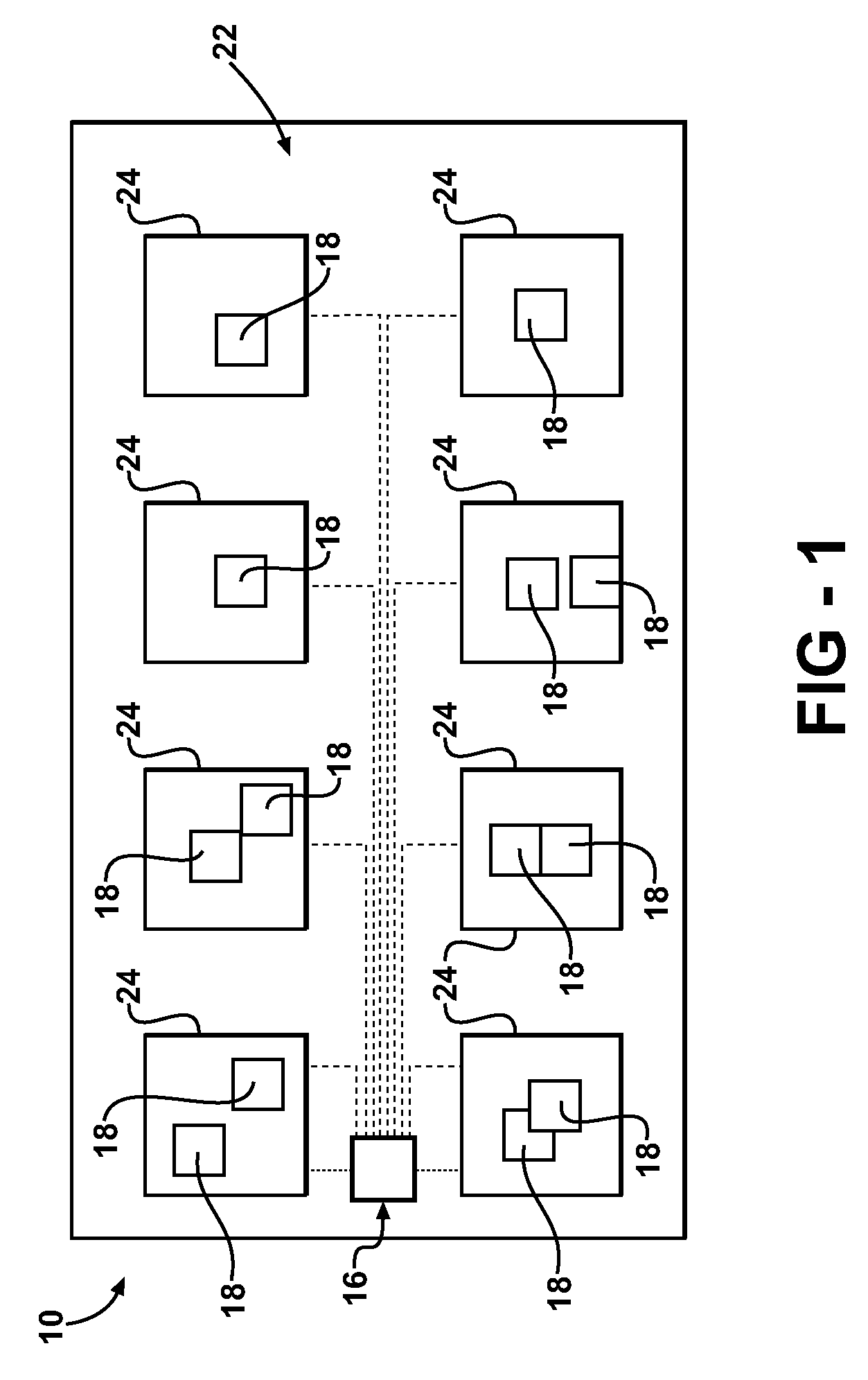Laser marking device and method
a laser marking and engraving technology, applied in the field of laser marking and engraving systems and methods, can solve the problems of not being scalable, not cost effective, not cost effective, not having etc., and achieves the effect of not having a high maintenance cost, not requiring a lot of space, and being cost effective and flexibl
- Summary
- Abstract
- Description
- Claims
- Application Information
AI Technical Summary
Benefits of technology
Problems solved by technology
Method used
Image
Examples
Embodiment Construction
[0029] Referring now to Figures, wherein like numerals indicates like or corresponding parts, a laser marking system (the system) of the present invention is generally shown at 10 in FIGS. 1, 2, and 3. The system 10 presents a networked distributed scalable laser marking architecture for high-speed simultaneous or sequential marking on a plurality of workpieces or parts, generally indicated at 12 in FIG. 3. Each part 12 has at least one ID tag associated with it, generally indicated at 15 in FIG. 3, for storing at least one of marking content and part's type information. Each ID tag 15 is further defined as at least one of RFID, magnetic, capacitive, and barcode tags attached to or incorporated into part 12, without limiting the scope of the present invention. The system 10 includes a main controller 16 and a network of distributed marking units 18 networkingly connected with one another and the main controller 16 by Ethernet, Industrial Ethernet, Internet, and / or wireless protocols...
PUM
| Property | Measurement | Unit |
|---|---|---|
| speed | aaaaa | aaaaa |
| magnetic | aaaaa | aaaaa |
| motion speeds | aaaaa | aaaaa |
Abstract
Description
Claims
Application Information
 Login to View More
Login to View More - R&D
- Intellectual Property
- Life Sciences
- Materials
- Tech Scout
- Unparalleled Data Quality
- Higher Quality Content
- 60% Fewer Hallucinations
Browse by: Latest US Patents, China's latest patents, Technical Efficacy Thesaurus, Application Domain, Technology Topic, Popular Technical Reports.
© 2025 PatSnap. All rights reserved.Legal|Privacy policy|Modern Slavery Act Transparency Statement|Sitemap|About US| Contact US: help@patsnap.com



